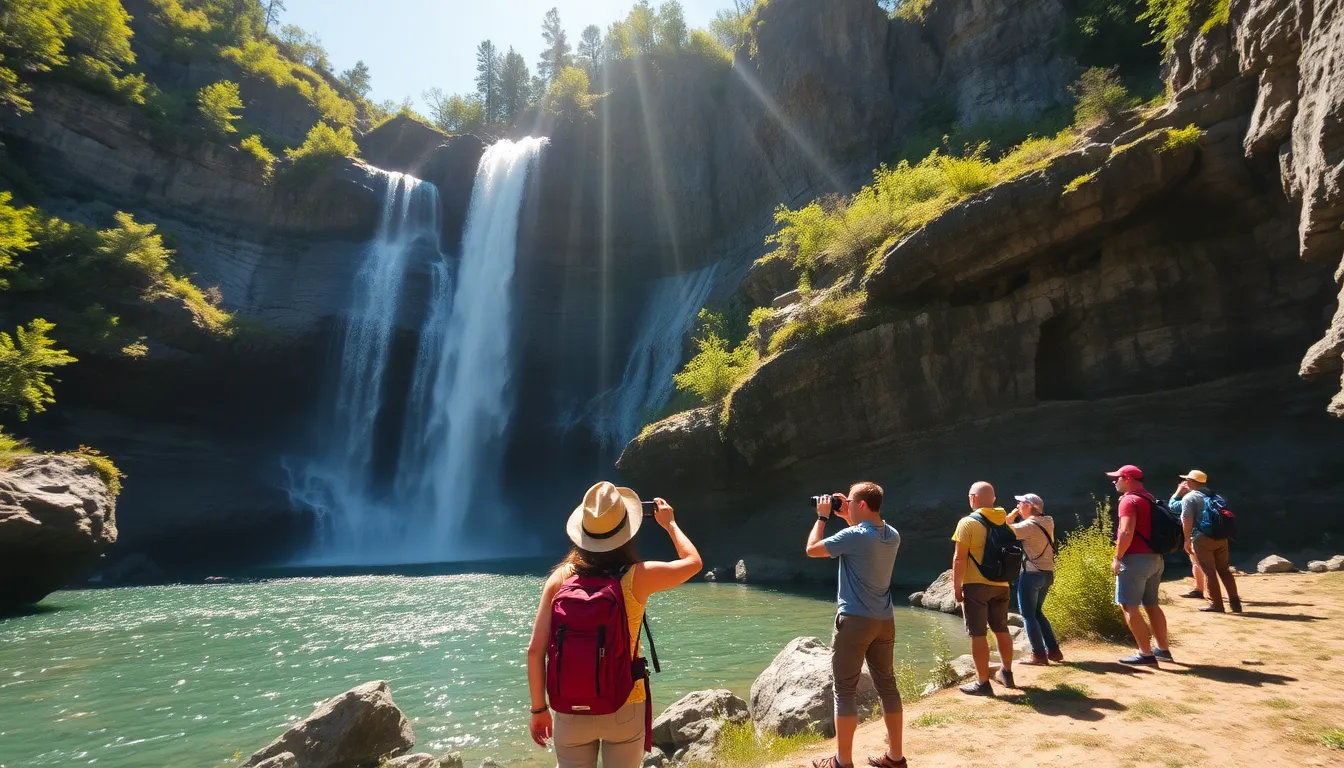Table of Contents
ToggleNestled in the heart of nature’s playground, Follheur Waterfall dazzles with its breathtaking beauty. But before you fill your water bottle and take a big gulp, you might want to pause and ponder: is this picturesque cascade safe to drink? After all, Mother Nature can be a bit of a prankster, and what looks like crystal-clear water might just be hiding a few surprises.
Overview of Follheur Waterfall
Follheur Waterfall captivates visitors with its stunning visual appeal and serene atmosphere. Many are drawn to its crystal-clear waters, creating a picturesque scene that entices adventure seekers and nature lovers alike. However, beauty often conceals hidden risks. One concern is the potential for contamination that can arise from nearby wildlife and vegetation.
The waterfall’s surrounding environment includes various plants and animals, which may introduce pathogens into the water system. Those interested in drinking directly from the waterfall must consider these factors. Testing for bacteria and chemicals can provide insight into this natural resource’s safety.
Natural water sources like Follheur carry varying degrees of risk. Logically, the source of the water affects its quality. Water coming from higher elevations may be cleaner than water collected closer to the ground where contaminants gather.
Visitors should prioritize awareness of the local ecology. Understanding that even seemingly pure sources may harbor danger is essential. Oftentimes, factors such as rainfall and human activity contribute to fluctuating water quality.
Researchers and environmental organizations often recommend thorough testing before consumption. Such precautions can prevent illness or discomfort. They stress the importance of considering alternative sources, such as filtered water, to ensure safety during visits to stunning natural locations like Follheur Waterfall.
Water Quality Concerns

Follheur Waterfall’s allure comes with important considerations about water safety. Testing the water quality is essential before deciding to drink it.
Natural Filtration Processes
Natural filtration occurs as water flows through soil, rock, and vegetation, which can remove some impurities. Processes like absorption allow certain contaminants to be filtered out, resulting in cleaner water. However, the effectiveness of these processes varies. For instance, elevation plays a key role; higher elevation sources generally feature better quality water due to less human interference. Understanding the surrounding ecology contributes to recognizing how well the natural filtration system works in this area.
Contaminants and Pollutants
Contaminants and pollutants pose significant risks to water safety. Nearby wildlife may introduce pathogens, and decaying vegetation could lead to harmful bacteria. Factors like heavy rainfall can exacerbate contamination levels, as runoff can mix pollutants into the water supply. Testing for specific contaminants like E. coli, nitrates, and chemicals is critical to evaluating safety. Despite Follheur’s beautiful appearance, caution is necessary given that appearances can be misleading.
Safety Considerations
Follheur Waterfall’s natural beauty may disguise underlying safety concerns regarding its water quality. Understanding these risks plays a critical role in ensuring visitors’ health.
Health Risks of Drinking Untreated Water
Drinking untreated water from Follheur Waterfall poses significant health risks. Pathogens, including bacteria and viruses, can thrive in untreated sources. E. coli, a common contaminant, can lead to severe gastrointestinal issues. Wildlife often contributes to contamination through fecal matter. Symptoms may include nausea, diarrhea, and abdominal cramps. Individuals with weakened immune systems face even greater dangers from drinking unsafe water. Consuming untreated water can lead to long-term health effects if contaminants persist. Prioritizing testing water quality before consumption remains essential for safety.
Signs of Contaminated Water
Identifying signs of contaminated water can prevent health issues. Cloudiness in the water often indicates high levels of sediment or microorganisms. Unpleasant odors or unusual tastes serve as potential red flags for contaminants. Discoloration or floating particles can also signal unsafe water conditions. Observing wildlife activity near the water may suggest pollution risks. Heavy rainfall may cause noticeable changes in water quality, increasing contamination levels. Remaining vigilant about these signs helps visitors protect their health while enjoying the picturesque waterfall.
Alternatives to Drinking Water from Waterfalls
Filtered water serves as a dependable alternative for those visiting Follheur Waterfall. It offers safety by removing harmful contaminants and pathogens, ensuring a clean drinking source. Bottled water, widely available in stores and online, provides convenience and ease of access during outings.
Purified water dispensers function as another reliable option. Many outdoor supply shops offer refill stations where travelers can easily fill reusable containers. Outdoor enthusiasts often carry portable filters, which effectively remove impurities and enhance water quality, making them ideal for hiking adventures.
Boiling water remains a classic method for ensuring safety. Boiling for at least one minute eliminates many pathogens, including E. coli. Utilizing purification tablets provides a simple solution where boiling isn’t feasible. These tablets effectively kill bacteria and viruses, offering peace of mind while enjoying nature.
Hydration packs filled with treated water supply a convenient solution for hikers and campers. Packs maintain a steady flow of water while on the move, allowing explorers to stay hydrated without relying on natural sources. In areas with uncertain water quality, carrying extra drinking water becomes essential for health.
Understanding local regulations about water sourcing ensures responsible choices while exploring waterfalls. When natural water sources lack safety, opting for alternatives allows individuals to enjoy their adventures without risking health. Travelers can appreciate the beauty of Follheur Waterfall while prioritizing safe hydration choices.
Follheur Waterfall’s breathtaking beauty is undeniable but drinking its water isn’t without risks. Visitors must be aware of potential contaminants that could pose serious health threats. The natural filtration processes may help but are not foolproof, especially after heavy rainfall.
To prioritize health and safety, it’s wise to avoid untreated water. Utilizing filtered or bottled water is a much safer option. Understanding the surrounding ecology and local regulations can further enhance safety measures. By taking these precautions, adventurers can enjoy the stunning scenery without compromising their well-being.





